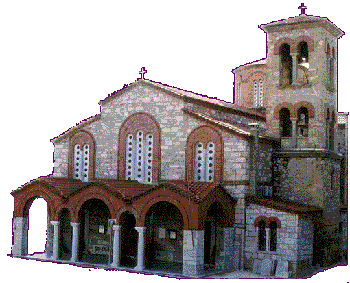
Chalandri was first inhabited in 2,500. Its original name was Flya which means "fertile land". For centuries to come, Flya became a part of the ancient city of Athens and was famous for its agricultural production. The land was divided into large estates and wheat, honey and cattle were exported in many parts of ancient Greece. Flya was also important as a stop point for caravans travelling from Penteli to teh Acropolis carrying the marbles that built Parthenon. The most famous inhabitant of ancient Flya was the playwright Euripides who belonged to the Kecropian clan in contrast with most onhabitants of Flya who belonged to the Ptolemaid clan. The patron god of the area was Delian Apollo.
Flya was largely destroyed during the Persian Wars. During the Roman period it was a rather deprived area with most of its inhabitants involved in the mausoleum producing industry. Christianity was introduced rather late in Flya (probably during the reign of emperor Justinian) as its inhabitants were known for their devotion to the Ancient Greek religion.
In 1909 the first roads connect Chalandri with Athens and a few years later branches of the Agricultural School open in the area.
Between the two World Wars the population of the city booms as it receives thousands of refugees from Asia Minor after Greece's defeat in the 1922 war with Turkey.
The Second World War is another era of decay for Chalandri as thousands die of famine and many inhabitants are shot or hanged due to their participation in resistance groups. The Greek civil war leads to further migration away from the area for about a decade.
Today, after decades of rapid economic development, Chalandri is a middle-class suburb of Athens. Lower Chalandri and the St Barbara districts are some of the most expensive areas of Athens while the centre of the city is famous for its shops and cafes. Even though its population exceeds 80,000 it still retains a neighbourhood character as the majority of its buildings are of small size with no more than two floors.
Having to face the challenges of a large city, Chalandri is expected to play an important role in the overall development of Athens in the next century.

We have no sources detailing the conditions in the area during Byzantine and late Roman times. It is believed that throughout this period Flya was very deprived and lightly inhabited. The name Flya is abandoned in the 13th century and the name Chalandri is adopted. Here are few of the numerous explanations of where the name came from:
1) From the byzantine word Chalandrion which means "place for monks" and was a term used for abandoned areas.
2) From the Turkish nobleman Chala who owned large plots of land in the area. (Chala's estate in Turkish is Chaladere).
3) From the Byzantine word Charadri which means rift. (Those familiar with the city know the Rematia neighbourhood near the city centre, which includes a small forested rift).
From the 11th to the 15th century numerous settlers arrived in the area. The region is occupied in succession from the Burgundians, the Catalans, the Florentines, the Venetians and finally the Ottomans. In the 14th century great numbers of Albanian settlers inhabit the region and are soon integrated with the local society.